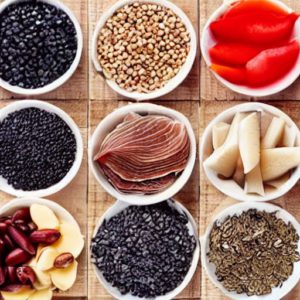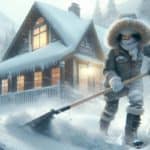Essential Strategies for Emergency Food Preparation and Storage
Accessing sufficient food becomes paramount during emergencies, whether you are facing a natural disaster, unforeseen power outages, or other unexpected events. Having a stockpile of survival food options can significantly enhance your ability to endure these challenging times. It ensures that you and your family have nutritious food available, even when regular food sources may be compromised or inaccessible. Preparing and storing the right food can provide the necessary sustenance to maintain energy levels and keep spirits high in the face of adversity.

This guide aims to equip you with a variety of easy-to-follow recipes and cooking techniques designed for situations where resources may be limited. Each recipe is crafted to be not only simple and nutritious but also straightforward to prepare, even if your cooking equipment is restricted. By utilizing these strategies, you can effectively ensure that you have access to wholesome meals during emergencies, helping you maintain strength and resilience to overcome any difficult circumstances.
Navigating Your Emergency Food Options
A wide range of emergency food choices exists that can provide essential nutrition during tough situations. Let’s delve into some of the most commonly recommended alternatives that can sustain you when it matters most.
Long-Lasting Canned Food Selections
Canned foods are a fundamental choice for emergency food storage due to their remarkable shelf life and convenience. These items are readily available at most grocery stores and encompass a diverse array of options including vegetables, fruits, meats, and soups. Canned goods are processed and sealed in airtight containers, effectively preserving their freshness and nutritional value.
The primary advantage of canned foods lies in their longevity; many canned products can be stored for several years, making them an excellent option for long-term disaster preparedness. Additionally, they require no cooking and can be consumed directly from the can—ideal for emergencies where cooking facilities may be limited or entirely unavailable. However, it’s important to note that canned foods can often be high in sodium, so whenever possible, opt for low-sodium varieties and complement your diet with fresh foods to ensure balanced nutrition.
Nutrient-Dense Dehydrated Foods
 Dehydrated foods represent another effective choice for emergency food storage, offering a lightweight solution that maintains essential nutrients. The dehydration process removes most moisture, significantly extending the shelf life of foods ranging from fruits and vegetables to meats and complete meals.
Dehydrated foods represent another effective choice for emergency food storage, offering a lightweight solution that maintains essential nutrients. The dehydration process removes most moisture, significantly extending the shelf life of foods ranging from fruits and vegetables to meats and complete meals.
One of the standout features of dehydrated foods is their compact size, making them easy to store and transport. They are also packed with nutrients as the dehydration process retains most of the vitamins and minerals present in the original foods. Typically, dehydrated items are packaged in vacuum-sealed bags or airtight containers to ensure they remain fresh and free from spoilage. However, it’s worth mentioning that these foods require rehydration before consumption, which involves adding water and allowing time for the food to regain its texture and flavor. This process, while slightly time-consuming, allows for a satisfying meal during emergencies.
Convenient Freeze-Dried Meal Options
Freeze-dried foods have emerged as a popular choice among survivalists and outdoor enthusiasts due to their lightweight nature, extended shelf life, and ease of preparation. The freeze-drying process involves freezing the food and then sublimating the ice into vapor, bypassing the liquid phase entirely. This method preserves the food’s structure and nutrients remarkably well.
The benefits of freeze-dried meals include their long shelf life, manageable weight, and straightforward preparation. These meals are often packaged in individual servings, simplifying portion control and meal planning in emergency situations. They also retain most of their original flavor and nutritional value, providing a convenient and healthy option. However, it’s essential to note that freeze-dried meals can be pricier than other emergency food solutions. Their convenience and longevity, however, make them a worthy investment for anyone serious about disaster preparedness.
Guidelines for Choosing Optimal Emergency Food Supplies
When selecting emergency food options, it is crucial to consider your personal needs and preferences. Here are some practical tips to guide you in making informed decisions:
- Evaluate any dietary restrictions or allergies that may affect your food choices, ensuring to select options that cater to your unique needs.
- Assess the nutritional value of your food choices, aiming for a well-rounded diet that includes essential vitamins and minerals.
- Check the expiration dates and shelf lives of products to confirm their long-term viability.
- Consider your available storage space and choose items that can be easily stored without compromising accessibility.
- Regularly rotate your emergency food supplies to keep them fresh and minimize waste.
By taking these factors into account, you can choose emergency food options that effectively meet your nutritional needs and prepare you for any unforeseen circumstances.
Recipe Ideas for Survival Food Preparation
Access to basic, nutritious meals that can be easily prepared with limited resources is crucial during emergencies. We have compiled a diverse list of recipes for breakfast, lunch, dinner, and snacks that are not only delicious but also designed to be simple to prepare using shelf-stable ingredients and long-lasting food items.
Nutritious Muesli with Dried Fruits for Breakfast
This hearty and nutritious breakfast dish is perfect for kickstarting your day during an emergency. Muesli is a high-energy food that can be conveniently stored in your emergency food supply. Here’s how to prepare it:
Begin by bringing water to a boil in a saucepan.
Add in the desired amount of muesli and stir well.
Lower the heat and cook for a few minutes until the muesli reaches your desired thickness.
Remove from heat and mix in dried fruits such as raisins, cranberries, or chopped apricots.
Allow it to sit for a few minutes so the flavors meld together.
Serve warm for a comforting and energizing breakfast!
This simple recipe ensures you enjoy a warm meal that keeps you feeling full and energized throughout the morning.
Flavorful Tuna Salad Wraps for Lunch
For a quick and satisfying lunch, consider making tuna salad wraps. These wraps are rich in protein and can be easily prepared with canned tuna and other shelf-stable ingredients. Here’s the quick preparation method:
In a mixing bowl, combine canned tuna, mayonnaise, diced celery, and a splash of lemon juice.
Season with salt, pepper, and any additional spices to your liking.
Spread a tortilla or flatbread with the tuna salad mixture.
Top with fresh lettuce, sliced tomatoes, and any other vegetables you prefer.
Roll the tortilla tightly and secure it with toothpicks if needed.
Slice the wrap into smaller portions for easy serving.
These tuna salad wraps not only taste great but also provide a balanced meal containing protein, vegetables, and carbohydrates.
Hearty One-Pot Chicken and Rice for Dinner
One-pot meals are an excellent solution when time and resources are limited, as they require minimal cooking equipment and can be made with a variety of ingredients. This one-pot chicken and rice dish is both filling and flavorful. Here’s how to create it:
Heat oil in a large pot and sauté chopped onions and minced garlic until fragrant.
Add diced chicken and cook until browned on all sides.
Mix in rice, chicken broth, and any additional spices to your preference.
Bring the mixture to a boil, then reduce the heat and cover the pot.
Allow it to simmer for 20-25 minutes, or until the rice is tender and the chicken is fully cooked.
Remove from the heat and let it sit for a few minutes before serving.
This one-pot chicken and rice recipe not only offers delicious flavors but also combines protein, grains, and vegetables for a well-rounded meal.
Easy Trail Mix Snack Recipe
Trail mix is an excellent option for a quick and energizing snack. It can be made using nuts, dried fruits, and other shelf-stable components. Here’s how to make it:
In a bowl, mix your favorite nuts, such as almonds, cashews, and peanuts.
Add dried fruits like raisins, dried cranberries, or sliced dates into the mix.
For added flavor, consider including pretzels, chocolate chips, or coconut flakes.
Stir everything together until well combined.
Store the trail mix in an airtight container for future snacking.
This homemade trail mix makes for a quick, nutritious snack that is perfect for on-the-go eating or enjoying during emergencies.
Effective Food Preparation Techniques for Survival Situations
 Proper food preparation is crucial during emergencies to ensure the safety and well-being of you and your loved ones. This section will explore the importance of food safety and hygiene practices, offer tips for storing and preserving food for extended periods, and discuss alternative cooking methods that can be utilized when resources are scarce.
Proper food preparation is crucial during emergencies to ensure the safety and well-being of you and your loved ones. This section will explore the importance of food safety and hygiene practices, offer tips for storing and preserving food for extended periods, and discuss alternative cooking methods that can be utilized when resources are scarce.
Ensure Food Safety and Hygiene Practices
To prevent foodborne illnesses during an emergency, emphasizing food safety and hygiene is essential. Here are some key practices to keep in mind:
- Hand Hygiene: Always wash your hands thoroughly with soap and clean water before handling food to minimize contamination risks.
- Sanitize Surfaces: Ensure all food preparation surfaces and utensils are clean and sanitized before use.
- Prevent Cross-Contamination: Keep raw and cooked foods separate to avoid cross-contamination that can lead to foodborne illnesses.
- Cook Thoroughly: Ensure food is cooked to the recommended internal temperature to eliminate harmful bacteria.
- Store Perishables Properly: Keep perishable items in a cool, dry place to prevent spoilage and maintain food quality.
By adhering to these practices, you can significantly reduce the risk of foodborne illness and ensure the safety of your meals during emergency situations.
Effective Food Storage and Preservation Techniques
There are numerous methods to store and preserve food for long-term use:
- Airtight Containers: Store food in airtight containers to protect it from moisture, air, and pests.
- Label and Date: Keep track of freshness by labeling each container with its contents and storage date.
- Regularly Rotate Stock: Use older items first and replace them with new ones to maintain freshness in your emergency food supply.
- Control Temperature: Store food in a cool, dry area away from direct sunlight and excessive heat.
- Utilize Freezing: Freeze perishable items when possible to significantly extend their shelf life.
By implementing these storage and preservation techniques, you can ensure that your emergency food supply remains safe and fresh for an extended period.
Alternative Cooking Methods for Emergencies
In emergencies, traditional cooking methods may not always be accessible. However, several alternative cooking techniques can be employed with minimal resources:
- Solar Cooking: Solar cookers harness the sun’s energy to prepare meals. They are portable, easy to use, and require no fuel.
- Camp Stoves: Compact and efficient, camp stoves can be powered by propane or butane and are ideal for outdoor cooking during emergencies.
- Cooking Over Fire: If you have access to a fire pit, cooking over open flames using wood or charcoal is a viable option. Basic fire-building skills are essential for this method.
- Portable Grills: Charcoal or gas grills can be used to cook meals outdoors when traditional stoves are unavailable.
These alternative cooking methods offer practical solutions for meal preparation when conventional cooking options are limited or unavailable.
Innovative Cooking Techniques for Limited Resources
When resources are scarce during an emergency, it’s vital to be resourceful and maximize what you have. This section will explore various cooking strategies that can be implemented when resources are limited, such as one-pot cooking, creative uses for leftovers, and improvisation with available ingredients.
Mastering One-Pot Cooking for Efficiency
 One-pot cooking is a versatile and efficient method for preparing entire meals using just one pot or skillet. This technique not only saves time but also reduces the need for multiple cooking utensils and conserves water for cleaning. Here are some tips for optimizing one-pot cooking:
One-pot cooking is a versatile and efficient method for preparing entire meals using just one pot or skillet. This technique not only saves time but also reduces the need for multiple cooking utensils and conserves water for cleaning. Here are some tips for optimizing one-pot cooking:
Select ingredients that can be cooked together, such as proteins, grains, and vegetables.
Layer your ingredients, starting with those that take the longest to cook, like meats or root vegetables, before gradually adding the rest.
Adjust the heat to ensure even cooking and prevent burning or sticking.
Incorporate enough liquid, such as broth or water, to allow ingredients to simmer and create a delicious sauce or broth.
Cover the pot and let the mixture simmer until everything is cooked through and flavors meld.
Season with herbs, spices, or sauces before serving to enhance flavor.
One-pot cooking allows you to create flavorful and nutritious meals while using fewer cooking tools and conserving resources.
Creative Repurposing of Leftovers
During emergencies, maximizing every ingredient while minimizing food waste is crucial. Utilizing leftovers creatively is an excellent way to repurpose ingredients and create new dishes. Here are some ideas:
Stir-Fries: Combine leftover vegetables, proteins, and grains for a quick and delicious stir-fry.
Soups or Stews: Create hearty soups or stews using leftover meats, vegetables, and broth.
Frittatas or Quiches: Mix leftover vegetables, meats, and eggs to make satisfying frittatas or quiches.
Wraps or Sandwiches: Use leftover meats, cheeses, and vegetables to craft tasty wraps or sandwiches.
Casseroles: Combine leftover items with pasta, rice, or potatoes to create hearty casseroles.
By creatively repurposing leftovers, you can reduce food waste and prepare new, flavorful meals.
Maximizing Limited Resources Effectively
In emergencies, it is vital to use limited resources like water and fuel wisely. Here are some strategies to help you make the most of what you have:
Reuse water from boiling or washing for watering plants or cleaning purposes.
Opt for low-energy cooking techniques like simmering or slow cooking to conserve fuel.
Insulate pots and pans to retain heat and minimize cooking time.
Keep lids on pots and pans while cooking to trap heat and reduce the need for additional fuel.
Plan meals in advance to avoid overcooking and wasting resources.
By following these tips, you can maximize limited resources while ensuring efficient and sustainable cooking in emergency situations.
Frequently Asked Questions (FAQ)
Can I use standard recipes in an emergency?
While traditional recipes may not always be feasible during emergencies, they can still serve as inspiration. You might need to adapt them based on the supplies and resources available to you. Consider these suggestions:
Simplify: Look for recipes that require fewer ingredients and straightforward cooking methods.
Substitutions: If you lack a specific ingredient, find a suitable alternative or omit it entirely.
Be Flexible: Adjust cooking times and temperatures according to your available resources.
Experiment: Don’t hesitate to be creative and try new flavors or combinations.
With resourcefulness and adaptability, you can still prepare delicious meals even with limited ingredients.
How long will emergency food supplies last?
The shelf life of emergency food options varies depending on the type of food and storage conditions. Here are some general guidelines for various food types:
Shelf Life of Emergency Food Options:
Canned goods: 2-5 years or longer
Dehydrated foods: 5-10 years or more
Freeze-dried meals: At least 25 years
To ensure freshness, regularly check expiration dates and rotate your emergency food supplies. Storing food in cool, dry conditions can also extend the shelf life of many items.
Can I modify the recipes to accommodate dietary restrictions?
Absolutely! The recipes provided can be adjusted to meet your dietary needs or preferences. Here are some tips for making substitutions:
Vegan or Vegetarian: Swap out meat or animal products for plant-based alternatives like tofu, tempeh, or lentils.
Gluten-Free: Use gluten-free grains such as rice, quinoa, or gluten-free flour instead of wheat-based products.
Dairy-Free: Replace dairy products with non-dairy alternatives, such as almond milk, coconut milk, or vegan cheese.
Allergies: Avoid allergens and seek suitable substitutes that align with your dietary requirements.
By making these adjustments, you can still enjoy nutritious and tasty meals that accommodate your dietary restrictions.
What non-perishable food products should I consider for disaster preparedness?
When stocking up on non-perishable food items for disaster preparedness, it’s essential to choose options with a long shelf life and critical nutrients. Some top choices include:
Canned vegetables, fruits, and meats
Dried legumes, lentils, and beans
Pasta, rice, and other grain products
Nut butters, such as peanut butter
Snacks like crackers and granola bars
Shelf-stable milk substitutes, including powdered milk or long-lasting cartons
These non-perishable foods can be stored for extended periods and provide vital nutrition during emergencies.
How can I ensure the safety of food stored during an emergency?
Ensuring the safety of stored food during emergencies is crucial to avoid foodborne illnesses. Here are some tips to follow:
Store food in cool, dry places, away from direct sunlight and extreme temperatures.
Inspect packaging regularly for any signs of damage, such as dents, bulges, or leaks.
Rotate your stock: Use older items first and replace them with new ones to keep your supplies fresh.
Utilize a food thermometer to verify that perishables are stored at safe temperatures.
Regularly check expiration dates on food packages and discard any expired items.
By following these guidelines, you can maintain the safety and quality of your emergency food supplies.
Blizzard Food Storage: Essential Tips and Techniques
Essential Steps for Preparing for Blizzard Conditions Effective Strategies for Stocking Non-Perishable Foods Blizzard Food Storage: When preparing for a blizzard, it is vital to focus on stocking non-perishable foods to ensure you have adequate sustenance throughout the storm. Such items are not only convenient but also possess a long shelf life, making them ideal […]
Surviving Without Fuel: Essential Strategies
Exploring the Fundamentals of Fuel-Free Living What Is the Concept of Living Without Fuel? Surviving Without Fuel: The concept of living without fuel centers on the pivotal goal of significantly reducing or entirely eliminating our dependence on conventional energy sources, such as gasoline and diesel. This lifestyle choice underscores the importance of adopting sustainable alternatives […]
Grid-Down Survival: Essential Strategies for Resilience
Effective Strategies for Preparing for Grid-Down Scenarios Building a Comprehensive Stockpile of Essential Supplies Grid-Down Survival: To thrive during a grid-down scenario, building a comprehensive stockpile of essential supplies is crucial for your survival and that of your family during prolonged power outages. The strategy involves gathering a diverse assortment of items that meet fundamental needs such […]
Prepper Relocation Guide: Universal Strategies
Crucial Factors to Consider When Relocating for Preparedness Key Influences on Relocation Choices Prepper Relocation Guide: When contemplating a relocation for preparedness, it is essential to conduct a detailed assessment of various personal and situational elements. One of the primary considerations is to evaluate individual needs and preferences. These can encompass factors such as family […]








I appreciate the emphasis on preparedness in your post. It’s true that access to food during emergencies can have a profound impact on our well-being and resilience. In my own experience, I’ve found that creating a solid emergency food plan not only helps in crisis situations but also fosters a sense of security.
Your experience highlights an important aspect of emergency preparedness that often gets overlooked: the emotional benefits that come from having a plan in place. When we think about food access during crises, it’s easy to focus solely on the logistical side—what to store, how to store it, and how much we might need. But the psychological impact is equally crucial.
You make such a great point about the emotional aspect of emergency preparedness. I’ve found that having a clear plan does a lot more than just give me a sense of control over the situation; it also calms my mind amidst uncertainty. When I think about food access during crises, I often reflect on how our society can fall into the trap of seeing these situations purely through a logistical lens.
You hit the nail on the head with the emotional side of emergency preparedness. It’s like packing a snack for a road trip not just to stave off hunger, but to keep the mood light. Having a plan really can morph that pit in your stomach into something resembling anticipation—like waiting for your favorite band to come on stage instead of worrying about whether they’ll even show up.
You’ve highlighted something really profound about the psychological aspects of being prepared. I love that analogy of packing a snack for a road trip. It’s true that a little preparation can shift our mindset dramatically. Instead of dreading the unknown, we can approach it with a sense of adventure. This is especially relevant not just for emergencies, but for life in general.
You make a great point about the psychological shift that comes with preparation. It really is fascinating how a little foresight can turn daunting experiences into exciting opportunities. Packing that snack for a road trip isn’t just about having something to munch on; it’s about anticipating the journey ahead and giving ourselves a bit of comfort to carry along. It’s a small act, but it sets the tone for what’s to come.
You’ve really captured something important with your thoughts on preparation and mindset. The analogy of packing that snack for a road trip is spot on—what seems like a simple act can really shift the way we perceive the journey ahead. It’s funny how the little things can take us from feeling anxious about the unknown to feeling excited, right?
I’m glad you resonated with that analogy! If you’re interested in more tips on embracing preparedness as a mindset for all of life’s journeys, check out this resource.
https://survivalbite.com/LostFoods
You’ve touched on something really essential. It’s fascinating how preparation, even in small ways, can not only help us feel more secure but can also transform our approach to uncertainty. I’ve noticed that when I take the time to plan for an outing or a significant life event, it does shift my mindset; it turns those moments into opportunities rather than obstacles.
I really resonate with that idea of turning anxiety into anticipation. It’s fascinating how our mindset can shift the whole experience. When I think about packing for a road trip, it’s not just about snacks or even the destination; it’s all the little moments that build excitement—like that mix of playlists you create or the roadside attractions you hope to discover along the way.
I totally get that vibe—having a solid game plan transforms anxiety into something manageable, and I recently came across some practical tips that can help with home protection during natural disasters, making the whole process feel a bit more reassuring.
‘Natural Disaster Home Protection Tips’
https://survivalbite.com/natural-disaster-home-protection-tips/.
Creating a solid emergency food plan really does make a significant difference, doesn’t it? There’s something reassuring about knowing you have a system in place when uncertainty strikes. It not only helps in emergencies but can also ease those everyday worries we all have.
Creating a solid emergency food plan really does make a significant difference. I can relate to the sense of assurance that comes from knowing you have a system in place. It’s interesting how preparing for the unexpected helps us feel more grounded in our everyday lives. I remember putting together a basic kit for storms when I lived in an area prone to hurricanes. It was almost therapeutic to organize it—picking out non-perishables and making sure I had enough water and essentials.
Creating that emergency food plan really can turn into a comforting ritual, can’t it? There’s something uniquely grounding about taking the time to prepare, knowing you’ve got that safety net in place. It’s like laying down little anchors in what can often feel like a chaotic world.
I completely relate to your perspective on preparedness, especially when it comes to emergency food plans. Having an organized strategy can really make a difference not just in times of crisis, but also in our day-to-day lives. It’s reassuring to know that you’re equipped to handle unexpected events.
I think you’re spot on about the importance of having an organized strategy for emergency food plans. It’s interesting how what often feels like a daunting task can actually add a layer of peace to our lives, right? I’ve found that when I have a well-thought-out food plan, it not only prepares me for emergencies but also simplifies my daily meals.
I completely agree with you about how a structured emergency food plan can bring a surprising sense of peace. It’s easy to overlook the mental load that comes with daily meal decisions until you find a system that helps simplify it. I’ve noticed that when I map out my meals for the week, not only do I feel more in control during unexpected situations, but it also cuts down on last-minute stress.
You bring up such a crucial point about the mental load of meal planning. It’s something many of us don’t recognize until we start implementing a more structured approach. When you take the time to map out your meals for the week, it’s not just about deciding what to eat; it’s also about creating a framework that makes life a little easier.
“I’m glad to hear you’re experiencing that peace of mind! If you’re looking for some inspiration to enhance your meal planning further, check out this helpful resource.”
https://survivalbite.com/LostFoods
I completely agree with you about the importance of an emergency food plan. It’s fascinating how such preparations bring not just physical security but also mental peace. I’ve found that having a designated stash of non-perishables can really ease anxiety when unexpected events occur.
It’s great to hear your thoughts on having an emergency food plan. You’re right; there’s definitely something comforting about knowing you’ve prepared a little for the unexpected. I’ve noticed that the process of gathering non-perishables can be a bit like building a little fortress—both physically and mentally.
You raise an interesting point about how the act of preparing can provide both physical and emotional comfort. It’s true that having a designated stash of non-perishables can act as a safety net. But I think it’s also worth considering how our reliance on these preparations can sometimes create a false sense of security. It’s easy to focus on stocking up without addressing other potential vulnerabilities—like knowing how to cook with those ingredients or having a plan for different scenarios beyond just food supply.
You make such a valid point about the potential pitfalls of relying too much on our preparations. The comfort that comes from having a stash of non-perishables is definitely real—there’s a sort of peace in knowing you have something to fall back on. But, as you’ve noted, that sense of security can be misleading if we don’t also equip ourselves with the skills or knowledge to make the most of what we have.
You’ve touched on something really important—preparations can create a false sense of security if we focus solely on stockpiling. While having non-perishables is comforting, the real game-changer is knowing how to use them effectively. I’ve found that experimenting with different recipes or techniques can take that comfort a step further. It transforms a simple stash into a toolkit for creativity and problem-solving.
You make a really valid point about the potential pitfalls of overly relying on our preparations. Having a stash of non-perishables does provide a sense of security, but it’s definitely not the whole picture. I’ve found that while I can be great at collecting items for a “just in case” scenario, the real challenge often lies in figuring out how to use what I have effectively when the time comes.
You make a really solid point about that uneasy balance between stockpiling provisions and actually knowing how to wield them like a culinary wizard. Having a bunker full of canned beans can feel great—it’s like the adult version of having a secret stash of candy—but if you’re not sure how to transform them into a meal that doesn’t resemble a science experiment, well, that sense of security starts to wane pretty quickly.
You’ve hit the nail on the head with that comparison. There’s definitely something comforting about knowing you’re stocked up on essentials. It gives a sense of preparedness, almost like the cozy security of your childhood candy stash. Yet, it does lead to the question of how effective that stockpiling really is if you’re not equipped to turn those beans into something more than just a side dish.
You’re right—the cozy security of a childhood candy stash is a vibe. Stocking up on essentials can definitely feel like a warm hug, but then you find yourself looking at a pantry full of beans, wondering how to turn them into a culinary masterpiece instead of just a side dish.
“Absolutely, having a stockpile is just the first step! If you’re looking to transform those essentials into delicious meals, check out this guide for some easy recipes that elevate your pantry staples.”
https://survivalbite.com/wild
It’s interesting you mention the mental peace that comes with having an emergency food plan. That sense of security is sometimes overlooked when we think about preparedness. I think it’s a bit like a safety net; knowing we have those non-perishables stored away allows us to focus on other things rather than worrying about what might happen if something unexpected arises.
I really resonate with that idea of an emergency food plan as a sort of safety net. It’s easy to get wrapped up in the logistics of preparedness and forget about the mental comfort it can provide. I remember during the early days of the pandemic, many of us found ourselves reflecting on how fragile our routines were. Stockpiling food turned out to be less about the food itself and more about gaining back a sense of control in uncertain times.
You hit the nail on the head there! It’s funny how we often think of an emergency food plan as just cans and boxes piled up in the pantry, but really, it’s like our own little fortress against the chaos of the outside world. I mean, who among us hasn’t had a moment in the grocery store where we felt like we were in a real-life version of “Survivor”?
You’ve hit on a key point that often gets overlooked—how much peace of mind can come from being prepared. It’s interesting how just knowing you have a stash of non-perishables can shift your mindset during stressful times. I’ve found it helpful to involve the family in the process too; it can turn into a little project where everyone feels a sense of responsibility and contribution. Plus, it sparks conversations about what we enjoy eating during those moments when we might not have access to our usual favorites. How do you organize your stash? I’m always looking for new ideas on what to include or how to keep things fresh.
Absolutely! If you’re looking to enhance your emergency food plan even further, check out this resource for helpful tips and product recommendations.
https://survivalbite.com/wild
You make a really good point about the mental peace that comes with having an emergency food plan. It’s interesting how something as simple as a stash of non-perishables can shift our mindset. I remember feeling way more at ease during last year’s storms just knowing I had food put aside. It’s not just about the practical side of being prepared; it’s almost like having a little safety net.
It’s great to hear about your personal experience with emergency food planning. The connection between food access and well-being during crises is often overlooked, yet it plays a vital role in how we cope and recover. Having a solid emergency food plan not only prepares us for unforeseen circumstances but also creates a layer of reassurance in our daily lives.
I really resonate with what you’ve shared. It’s interesting how often the conversations around crisis management focus on logistics and infrastructure while the human aspect, like food access, can get sidelined. From personal experience, I found that having a well-thought-out emergency food plan not only helped me feel prepared during a recent severe weather event but also made a significant difference in my overall mental state. There’s something comforting about knowing that you have essentials on hand.
I completely understand where you’re coming from. It’s so true that discussions around crisis management tend to lean heavily on the logistical side, often overlooking essential human factors like food access. I remember going through a similar experience during a sudden power outage in my area. I had a few supplies ready, which really eased my anxiety about the situation.
I completely agree with your point about the human side of crisis management; I recently came across some practical tips that really emphasize the importance of home protection and preparedness, especially when it comes to ensuring we have essentials during emergencies.
‘Natural Disaster Home Protection Tips’
https://survivalbite.com/natural-disaster-home-protection-tips/.
It’s refreshing to hear your perspective on the human side of crisis management. You’re right; logistical plans often overshadow the critical elements that affect mental well-being, like food access. Having an emergency food plan goes beyond just being prepared—it’s about nurturing a sense of agency in chaotic situations.
I completely resonate with your point about the often-overlooked human side of crisis management. It’s interesting how emergency plans can feel so clinical, focusing on logistics and supplies, while neglecting the emotional toll those crises take on individuals and communities. When I think about it, having an emergency food plan really can empower people, giving them a sense of control when everything else feels unpredictable.
You bring up a crucial point that often gets overlooked in discussions about crisis management. It’s all too easy to get wrapped up in logistics and infrastructure when preparing for emergencies, yet the human element—like ensuring access to food—can profoundly impact our resilience and well-being during these situations.
I appreciate your thoughts on this. It’s so true that the human side of crisis management often gets overlooked, despite how much it can affect our well-being. Having that emergency food plan really can be a game-changer. It’s not just about having supplies; it’s about that sense of control it gives you during unpredictable situations. I’ve found that planning for things like this can bring a surprising amount of peace of mind.
You’ve really hit the nail on the head with your insights about the human side of crisis management. It’s interesting how much our mental state can affect our ability to navigate those unpredictable times. That feeling of control, even in the midst of chaos, really cannot be understated.
I get what you’re saying—having control really does make a difference, and if you’re thinking about preparing for unexpected situations, I’ve found that portable camping stoves can be a practical game-changer for outdoor cooking and peace of mind.
‘Portable Camping Stoves: Your Ultimate Outdoor Cooking Solution’
https://survivalbite.com/portable-camping-stoves-your-ultimate-outdoor-cooking-solution/.
I completely relate to what you’re saying about the importance of preparedness. Creating an emergency food plan really does instill a sense of security that’s hard to replicate. I was reminded of this during last year’s storms when stores were wiped clean of essentials like water and non-perishables. It made me realize how crucial it is to have a plan in place, not just for ourselves but for our families too.
You bring up such a valuable point about the sense of security that comes with having an emergency food plan. It’s interesting how real-life events, like those storms, can really shine a spotlight on what we sometimes take for granted. The panic when shelves go empty is a powerful reminder of the unpredictability of life.
You’re right about the sense of security an emergency food plan provides. It’s such a practical way to prepare for the unexpected, yet it’s often overlooked until situations really bring it to the forefront. I remember during a significant storm a few years back—my area had a major power outage for over a week. The panic I felt when I saw the grocery shelves empty was eye-opening. It made me realize how much we depend on those everyday conveniences and how quickly they can vanish.
I completely agree; having that peace of mind during unpredictable times is crucial, and I found some practical tips that really emphasize how to protect our homes during natural disasters.
‘Natural Disaster Home Protection Tips’
https://survivalbite.com/natural-disaster-home-protection-tips/.
It’s interesting how a powerful experience, like that storm you mentioned, can shift our perspective on preparedness so profoundly. The empty grocery shelves really highlight a vulnerability we don’t always acknowledge until we find ourselves in a daunting situation. It sounds like that week without power really opened your eyes to just how much we lean on those everyday conveniences.
You’ve touched on a critical aspect of preparedness that often gets overlooked until it’s too late. I’ve found that establishing a solid emergency food plan not only helps sustain physical health but also offers a sense of security and mental well-being during crises.
This topic really resonates with me, especially given how unpredictable our world can be these days. I still remember the summer storm that knocked out our power for several days. Thankfully, I had begun to stockpile some essentials, but I was surprised by how quickly we ran out of fresh food. Your focus on nutritious recipes that cater to limited resources is so important.
It’s interesting how these unexpected events can really shift our priorities, right? That summer storm sounds intense, and I can imagine how unsettling it must have been to be without power for so long. It’s a wake-up call in many ways—like, who really thinks about the challenges of keeping fresh food on hand until you’re faced with that very situation?
Your emphasis on emergency food preparation is a timely reminder of how often we can overlook the basics in our fast-paced lives. I’ve found that beyond just having stockpiled food, understanding the nutritional value of what we store is crucial. For instance, focusing on foods rich in protein and healthy fats can help maintain energy during prolonged emergencies.
You bring up such a valuable point about the nutritional aspects of emergency food preparation. It’s so easy to get caught up in stockpiling food items that may not be the best for our overall wellness. I’ve found that while canned goods and dried foods are convenient, making sure I include a variety of foods—especially those high in protein and healthy fats—has made a noticeable difference in how I feel during stressful times.
You make such a great observation about balancing convenience with nutrition in emergency food prep. It’s like walking that tightrope where you want to be prepared without falling into the trap of relying solely on what’s easy to grab. I’ve definitely seen the benefits of including a wider variety of foods in my own stash, especially foods rich in protein and healthy fats. Not just for the body but for the mind too—stressful times can be tough, and feeling physically good seems to help me cope better mentally.
You’ve hit on something really important with the balance of convenience and nutrition in emergency food prep. It’s easy to fall into the trap of grabbing whatever’s quick and shelf-stable, but a thoughtful approach really pays off when we need it most. Incorporating a range of foods, especially those rich in protein and healthy fats, helps not just our bodies but our mental state as well.
You’ve really hit the nail on the head with that point about nutritional value in our food stockpiles. It’s so easy to focus on just accumulating items that we think will last forever, but overlooking what those items actually do for our bodies can lead us to feel sluggish or drained when we need energy the most.
I love how you emphasize the importance of emergency food preparation! I’ve found that being proactive about food storage not only ensures safety during crises but also encourages healthier eating habits. A few months ago, I started a small garden with herbs and veggies, which has been a game changer for both my emergency stock and everyday cooking. It’s amazing how self-sufficiency can boost both morale and nutrition!
Your post raises vital points about the necessity of emergency food preparation, a topic that feels all the more relevant given recent weather events and supply chain disruptions. However, I believe there’s a deeper layer to this discussion that deserves attention—how our approach to food stockpiling can reflect broader societal issues.
You bring up a really interesting point about how food stockpiling taps into bigger societal issues. It’s fascinating to consider that our approach to emergency preparedness often reflects what’s happening around us—economic inequality, access to resources, and even how we respond to fear. People in different situations have varying capacities to store food, and that disparity can sometimes mirror broader societal divides.
This is such an important topic, especially considering how unpredictable emergencies can be. I remember going through a severe weather event last year, and it really highlighted the value of being prepared. It was eye-opening to realize just how quickly our normal routines could be disrupted. Having a stockpile of food not only provided physical sustenance but also a sense of security amid the chaos.
You raise a really important point about food access during emergencies. I remember when we had a major storm hit last year, and my family was without power for a few days. We had a little stash of canned goods and dried fruits, which definitely helped us get through the lack of fresh food. It’s fascinating how people sometimes overlook the nutritional aspect in these situations, thinking survival food is just about calories. I love that you’re focusing on nutritious recipes and easy cooking techniques. Have you considered incorporating some pantry staples like beans or lentils? They’re versatile and packed with protein. It’s like having a secret superfood stash ready for when life throws curveballs! Would love to hear your thoughts on that!
You bring up such a crucial aspect of emergency preparedness – food access and nutrition really can make all the difference. Your experience during that storm highlights how these situations push us to think creatively about what’s on our shelves. It’s great that you had canned goods and dried fruits; those little stashes can feel like a lifeline.
Absolutely, incorporating pantry staples like beans and lentils is a fantastic idea! They not only offer great nutrition but are also incredibly versatile. If you’re interested, check out our collection of recipes featuring these superfoods to help you prepare for any emergency!
https://survivalbite.com/wild
I really resonate with your focus on emergency food preparation and storage. It’s such a relevant topic, especially given the unpredictability of natural disasters and other emergencies these days. I remember when a major storm knocked out power in our area for almost a week; it was eye-opening to see how unprepared so many of us were. Thankfully, I had started stocking some non-perishables, but it still made me realize how much more I needed to do to ensure my family was truly ready.
This guide is timely and essential, especially as we witness an increase in unpredictable weather patterns and other emergencies. I’ve often found that the mental aspect of being prepared is just as critical as the physical stockpiling of food. When my community faced a severe storm last year, knowing I had a few easy-to-cook meals made a significant difference in keeping my family calm.
This post resonates deeply with me, especially as I’ve seen firsthand how unpredictable emergencies can be. A few years back, we experienced a major winter storm that knocked out power for several days in our area. I had always thought I was prepared, but the reality of not having sufficient emergency food genuinely highlighted the importance of planning and storing the right items.
I really appreciate the focus on emergency food preparation and storage. It’s something that often gets overlooked until we’re caught in a crisis. I’ve been trying to build my own stockpile over the past year, and I’ve learned a few things along the way that could be helpful. For instance, I’ve found that incorporating more grains like quinoa and farro not only adds nutritional value but also has a decent shelf life. Plus, they can be prepared with minimal ingredients, which is great for those times when supplies are low.
It’s great to hear about your journey with food preparation and storage! Incorporating more grains like quinoa and farro is such a smart move. They’re not just nutritious, but their versatility really shines through in a pinch. I’ve found that mixing them in with beans or even some canned vegetables creates fulfilling meals without a lot of fuss.
Your insights on emergency food preparation and storage resonate deeply with me, as I’ve often contemplated the importance of self-sufficiency, especially in unpredictable times. The necessity to have supplies on hand isn’t just a matter of convenience; it’s truly a fundamental aspect of ensuring our families’ well-being when circumstances take an unexpected turn. I recall an incident from a few years ago when a powerful storm knocked out power in our area for several days. It was a pivotal moment that led me to rethink how I stored food and prepared for emergencies.
This post raises an essential topic, especially given the increasing frequency of natural disasters and other emergencies that can disrupt our daily lives. I completely agree that a well-thought-out stockpile of emergency food can be a game-changer when accessing regular food sources is compromised.
I completely resonate with your insights on emergency food preparation and storage! It’s fascinating how being proactive in stocking up can not only protect our health but also boost morale during crises. I’ve started meal prepping with non-perishables like beans, rice, and freeze-dried veggies, which are not only nutritious but also versatile.
I’m really glad to hear you resonate with those insights! Emergency food preparation is such an important topic, and it’s great to see more people embracing it. Your choice of non-perishables like beans and rice is spot on; they’re not only staple foods but also incredibly filling. Freeze-dried veggies are a smart addition too—lots of nutrients and they don’t take up much space.
Your insights on emergency food preparation and storage resonate deeply, especially as we navigate a world where unforeseen events can disrupt our daily lives. The notion of having a reliable stockpile of nutritious food goes beyond mere resourcefulness; it reflects a broader cultural shift towards self-sufficiency and preparedness that has gained traction in various communities.
Your reflections on emergency food preparation and storage resonate on multiple levels. The way you pointed out how having a dependable stockpile speaks to self-sufficiency and preparedness truly captures the essence of our current climate. It’s interesting to think about how this shift has sparked a greater awareness in communities—many of which might have taken basic access to food for granted just a little while ago.
“I’m glad to hear that my insights resonated with you! If you’re interested in enhancing your emergency preparedness, check out this resource that offers practical tips and wholesome options for building your supply.”
https://survivalbite.com/wild